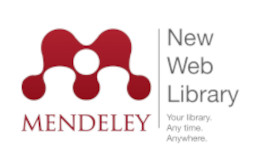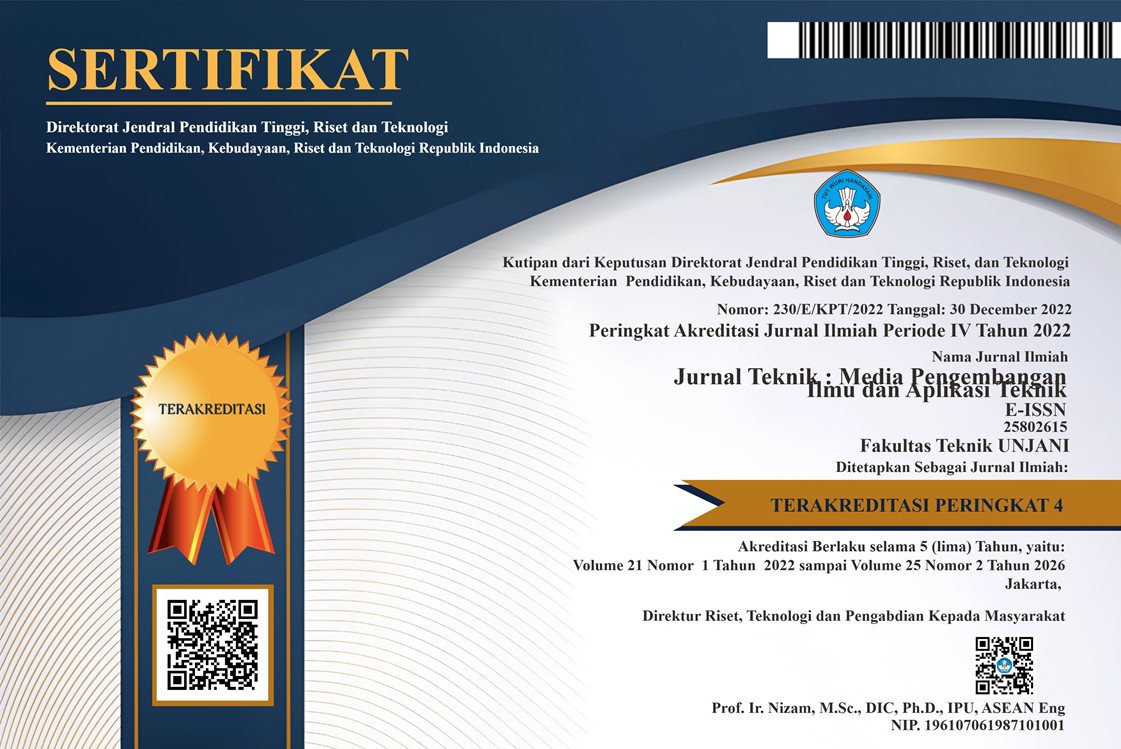Pengaruh Mobilitas Masyarakat terhadap Tingkat Penambahan Jumlah Kasus COVID-19 di Surabaya
DOI:
https://doi.org/10.55893/jt.vol24no1.684Keywords:
mobilty, time lag, linear regression, modelling, Covid-19Abstract
This study aims to examine the impact of population and vehicle mobility on the number of COVID-19 cases in Surabaya and to determine the optimal time lag between mobility patterns and the increase in new cases. Linear regression analysis was conducted, with the daily number of positive COVID-19 cases as the dependent variable (Yi) and mobility data as the independent variable (Xi). The mobility data were collected from transportation hubs, including Gubeng Train Station, Purabaya Bus Terminal, and the Waru Utama Toll Gate The results indicate a pattern of increased COVID-19 cases that aligns with changes in mobility patterns. At a lag of 0 days, the correlation between mobility and COVID-19 cases has a coefficient of determination (R²) of 0.719, which increases to 0.753 with a 15-day lag (lag = 15). This suggests that fluctuations in community mobility in Surabaya have a stronger impact on COVID-19 case numbers within a 15-day period afterward. The linear regression model, developed through a stepwise selection process, shows that the mobility level at the Waru Utama Toll Gate is the most significant predictor variable, making it an essential factor in understanding the COVID-19 transmission dynamics in the region.
References
Alawy, G. A. et al. (2021). Correlation Between Mobility and COVID-19 Cases in Surabaya City, Indonesia. 4(2), 154–162.
Cartenì, A. et al. (2020). How mobility habits influenced the spread of the COVID-19 pandemic: Results from the Italian case study. Science of the Total Environment, 741, 140489. https://doi.org/10.1016/j.scitotenv.2020.140489
Dinas Perhubungan Kota Surabaya. (2020). Data Arus Bus dan Penumpang AKAP AKDP Unit Terminal Purabaya Tahun 2020.
Djalante, R. et al. (2020). Review and analysis of current responses to COVID-19 in Indonesia: Period of January to March 2020. Progress in Disaster Science, 6, 100091. https://doi.org/10.1016/j.pdisas.2020.100091
Eisenmann, C. et al. (2021). Transport mode use during the COVID-19 lockdown period in Germany: The car became more important, public transport lost ground. Transport Policy, 103, 60–67. https://doi.org/10.1016/J.TRANPOL.2021.01.012
Freedman, D. A. (2009). Statistical models: theory and practice. cambridge university press.
Gezairy, H. A. (2003). Travel epidemiology: WHO perspective. International Journal of Antimicrobial Agents, 21(2), 86–88. https://doi.org/10.1016/S0924-8579(02)00365-5
Gugus Tugas Percepatan Penanganan COVID-19. (2021). Laporan Kasus Harian Satgas Penanganan COVID-19.
Hoogeveen, M. J. et al. (2022). Environmental factors and mobility predict COVID-19 seasonality in the Netherlands. Environmental Research, 211, 113030. https://doi.org/10.1016/J.ENVRES.2022.113030
Iacus, S. M. et al. (2020). Human mobility and COVID-19 initial dynamics. Nonlinear Dynamics, 101(3), 1901–1919. https://doi.org/10.1007/s11071-020-05854-6
Kraemer, M. U. G. et al. (2020). The effect of human mobility and control measures on the COVID-19 epidemic in China. Science, 368(6490), 493–497. https://doi.org/10.1126/science.abb4218
Linka, K. et al. (2020). Global and local mobility as a barometer for COVID-19 dynamics. MedRxiv: The Preprint Server for Health Sciences, 1-26. https://doi.org/10.1101/2020.06.03.20130658
Pandey, G. et al. (2020). SEIR and regression model based COVID-19 outbreak predictions in India. ArXiv, 1–10. https://doi.org/10.1101/2020.04.01.20049825
PT. Jasa Marga Cabang Surabaya Gempol. (2020). Data Lalu Lintas Tol Surabaya Gempol Tahun 2020.
PT. Kereta Api Indonesia DAOP VIII Surabaya. (2020). Volume Penumpang Surabaya Gubeng Tahun 2020.
Rustam, F. et al. (2020). COVID-19 Future Forecasting Using Supervised Machine Learning Models. 8, 101489–101499. https://doi.org/10.1109/ACCESS.2020.2997311
Shi, Z., & Fang, Y. (2020). Temporal relationship between outbound traffic from Wuhan and the 2019 coronavirus disease (COVID-19) incidence in China. 81973144, 1–16. https://doi.org/10.1101/2020.03.15.20034199
Shirvani, S. et al. (2020). Correlation between Air and Urban Travelling with New Confirmed Cases of COVID-19 A Case Study. ArXiv Preprint ArXiv:2010.01413.
Tang, K. C. et al. (2025). Using GeoAI to examine infectious diseases spread in a hyperdense city: A case study of the 2022 Hong Kong COVID-19 Omicron wave. Cities, 158, 105600. https://doi.org/10.1016/J.CITIES.2024.105600
WHO. (2019). Pneumonia of unknown cause reported to WHO China Office.
Additional Files
Published
Issue
Section
License
Copyright (c) 2025 Gholiqul Amrodh Alawy, Achmad Wicaksono, Syaripin, Adelia Nur Isna Kartikasari, Niswah Selmi Kaffa

This work is licensed under a Creative Commons Attribution-NonCommercial-ShareAlike 4.0 International License.
Penulis yang menyerahkan artikel di Jurnal Teknik: Media Pengembangan dan Aplikasi Teknik untuk keperluan publikasi telah mengetahui bahwa Jurnal Teknik: Media Pengembangan dan Aplikasi Teknik memberikan akses terbuka terhadap konten untuk mendukung pertukaran informasi mengenai ilmu pengetahuan, sesuai dengan penerbitan daring yang berbasis Open Access Journal dan mengikuti Creative Commons Attribution 4.0 International License. Sehingga penulis setuju dengan ketentuan-ketentuan berikut:
1. Penulis memegang hak cipta dan memberikan hak publikasi pertama kepada pihak jurnal dengan pekerjaan secara bersamaan
di bawah Creative Commons Attribution 4.0 International License yang memungkinkan orang lain untuk berbagi pekerjaan
dengan pengakuan kepengarangan karya dan publikasi pertama artikel tersebut di Jurnal Teknik: Media Pengembangan dan
Aplikasi Teknik.
2. Penulis dapat melakukan perjanjian tambahan untuk hak distribusi non-eksklusif artikel yang telah diterbitkan di jurnal ini
(misalnya, posting ke sebuah repositori institusi atau menerbitkannya dalam sebuah buku), dengan mengakui bahwa
publikasi pertama dilakukan di Jurnal Teknik: Media Pengembangan dan Aplikasi Teknik.
3. Penulis diizinkan dan didorong untuk menyebarkan karya mereka secara daring (misalnya, dalam repositori institusi atau
laman web penulis) setelah artikel terbit (proses penerbitan artikel selesai). Hal ini terkait dengan imbas dari pertukaran
informasi yang produktif (Lihat Pengaruh Open Access).












